Biology > STUDY GUIDE > BIOS 242 Week 8 Final Exam (Study Guide): Summer 2021/2022 (All)
BIOS 242 Week 8 Final Exam (Study Guide): Summer 2021/2022
Document Content and Description Below
FINAL EXAM STUDY GUIDE – MICRO MARCH 2018 INSTRUCTIONS: It’s time to show your skills and knowledge of what you have learned! This Final Exam contributes 230 points to your overall grade, so pleas... e do your best. There are 60 multiple choice questions worth 3 points each (180 total points). There are 5 Fill in the blanks question worth 3 points each (15 total points). There are 5 “Select all that apply” question worth 3 points each (15 total points). There is 1 matching question worth 5 points (5 total points). There is 1 essay question worth 5 points (5 total points). There is 1 essay questions worth 10 points (10 total points). TCO 1: Given a list of Koch's postulates, analyze how early microbiologists proposed hypotheses and performed experiments to determine the causes of various diseases. Describe the contributions of Leeuwenhoek and Koch to the field of microbiology. Describe the six different categories in which the organisms described by Leeuwenhoek were grouped. TCO 2 – Given pictures of a variety of microorganisms including fungi, protozoa, bacteria, and viruses, classify each as prokaryotic, eukaryotic, or acellular and compare and contrast their structure and function. Describe cellular macromolecules such as carbohydrates, lipids, proteins, and nucleic acids, and the roles they play in cellular structures (Ch. 2) Compare and contrast molecular components of prokaryotes (Bacteria and Archaea), eukaryotes, and viruses as well as the environmental conditions these can be found in A Classify and describe the general characteristics of prokaryotes. Describe Gram positive, Gram negative, and Acid Fast cell wall/membrane structures including molecular components (lipids, acids, endotoxins, periplasmic space). Compare/contrast methods of transport into and out of cells Compare/contrast archaea and bacteria in terms of cellular structures and how they were separated by Carl Woese. Compare/contrast prokaryotes and eukaryotes in terms of size, shape, reproduction, motility, organelles, metabolic processes TCO 3 – Given several types of microscopes, evaluate how scientists use the microscopes to identify and study microorganisms. Describe the principles of various types of microscopy and their applications. Describe various staining methods used in microscopy Analyze the different methods of classification and identification of microorganisms. TCO 4 – Given a culture of a microorganism, examine its physical and nutritional requirements. Explain how environmental conditions (temperature, pH, oxygen, and osmotic and hydrostatic pressure) affect microbial growth. Describe the information that can be interpreted from a growth curve; name the four phases and know what makes each unique TCO 5 – Given a nutritional requirements of a microorganism, analyze the processes of microbial metabolism Compare and contrast respiration and fermentation. Discuss the macromolecular structure as well as function of enzymes in a cell Describe the three stages of aerobic glucose catabolism. Compare aerobic and anaerobic metabolism in terms of products and # ATP produced TCO 6 – Given the characteristics of a eukaryotic organism, classify it into its right kingdom based on genetic relatedness. Describe the characteristics of protozoa, their nutritional requirements, and their mode of reproduction, and relevant vocab (structural features). Describe the characteristics of fungi that distinguish them from other eukaryotes. Discuss the role of arthropod vectors in disease transmission; differentiate mechanical and biological vectors TCO 7 – Given the characteristics of an acellular pathogen, identify the pathogen to design the appropriate treatment strategy. Discuss the classification strategies of a virus. Describe the intracellular and extracellular structures of viruses Discuss the various modes of replication of a bacteria virus and animal virus. Discuss the different ways viruses can be cultured in a lab. Compare and contrast viruses, virions, prions, and viroids. TCO 8 –Analyze methods of controlling microbial growth in the environment and in the body. Describe the appropriate physical and/or chemical methods of controlling microbial growth when given a particular scenario (e.g. sterilizing insulin, saline solution, fresh fruits/veggies, goggles; de-germing local injection site, table tops, etc.) Summarize the mode of action of major groups of antimicrobial and antiviral drugs. Summarize practices that have led to increased bacterial antibiotic resistance and strategize ways to limit this increased resistance. Describe factors to be taken into account when selecting antimicrobial and antiviral drugs, including drug effects on patients. TCO 9 – Given an illustration of the three lines of defense that protect the human body from pathogens, analyze how the components of each work to prevent or overcome infection Differentiate between the five different classes of antibodies. Differentiate between passive and active acquired immunity. TCO 10 –Given data on an outbreak of a microbial disease, propose a plan that outlines the steps taken to identify the cause of the disease and to stop or limit the spread of the infection. TCO 11 – Given a patient with the symptoms of influenza or another infectious disease, identify the causative agent and analyze its pathogenicity. MICROBES TO KNOW: (unique features, associated diseases, targets for antimicrobials) DISEASES TO KNOW: (causes, symptoms, signs, prevention) [Show More]
Last updated: 7 months ago
Preview 1 out of 17 pages
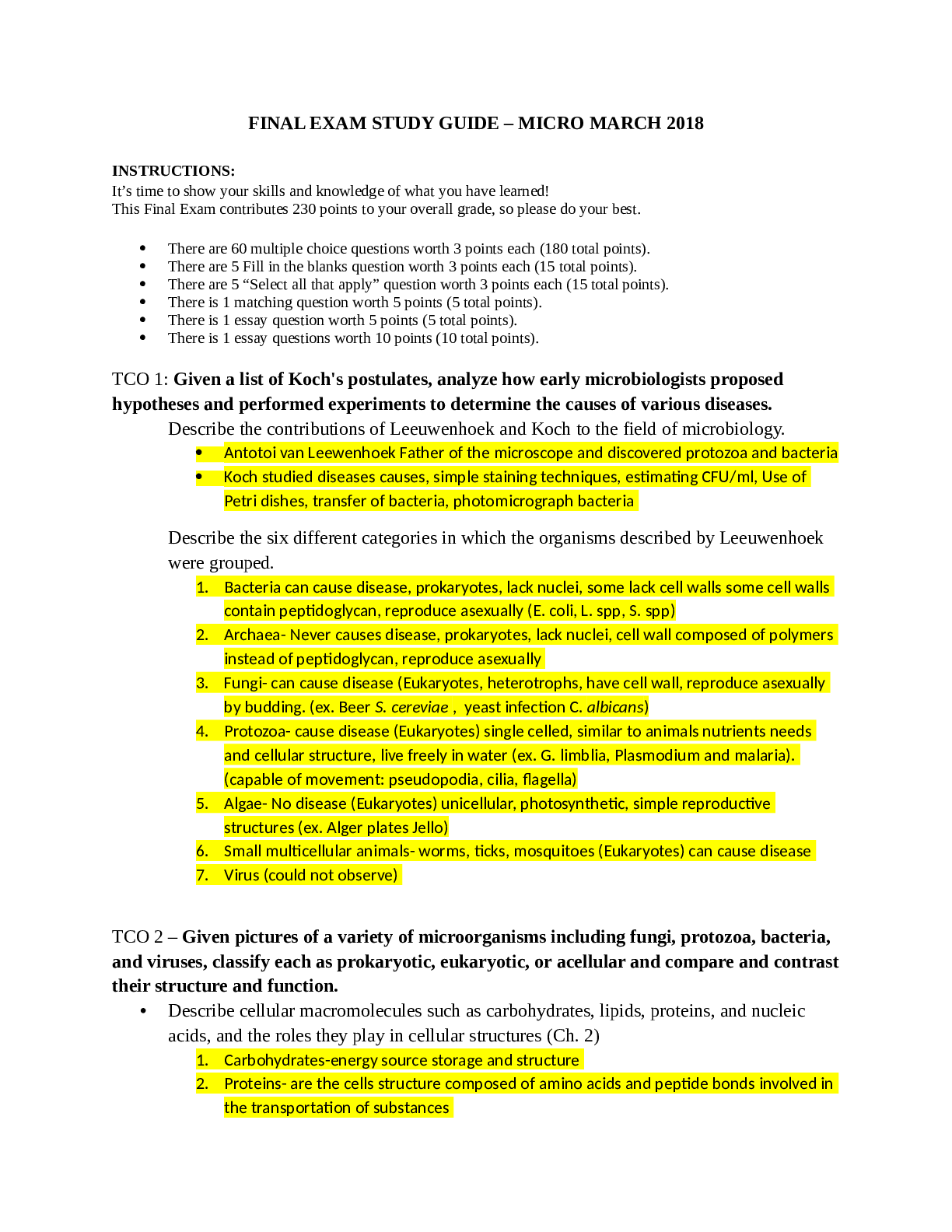
Reviews( 0 )
Document information
Connected school, study & course
About the document
Uploaded On
Feb 01, 2022
Number of pages
17
Written in
Additional information
This document has been written for:
Uploaded
Feb 01, 2022
Downloads
0
Views
46

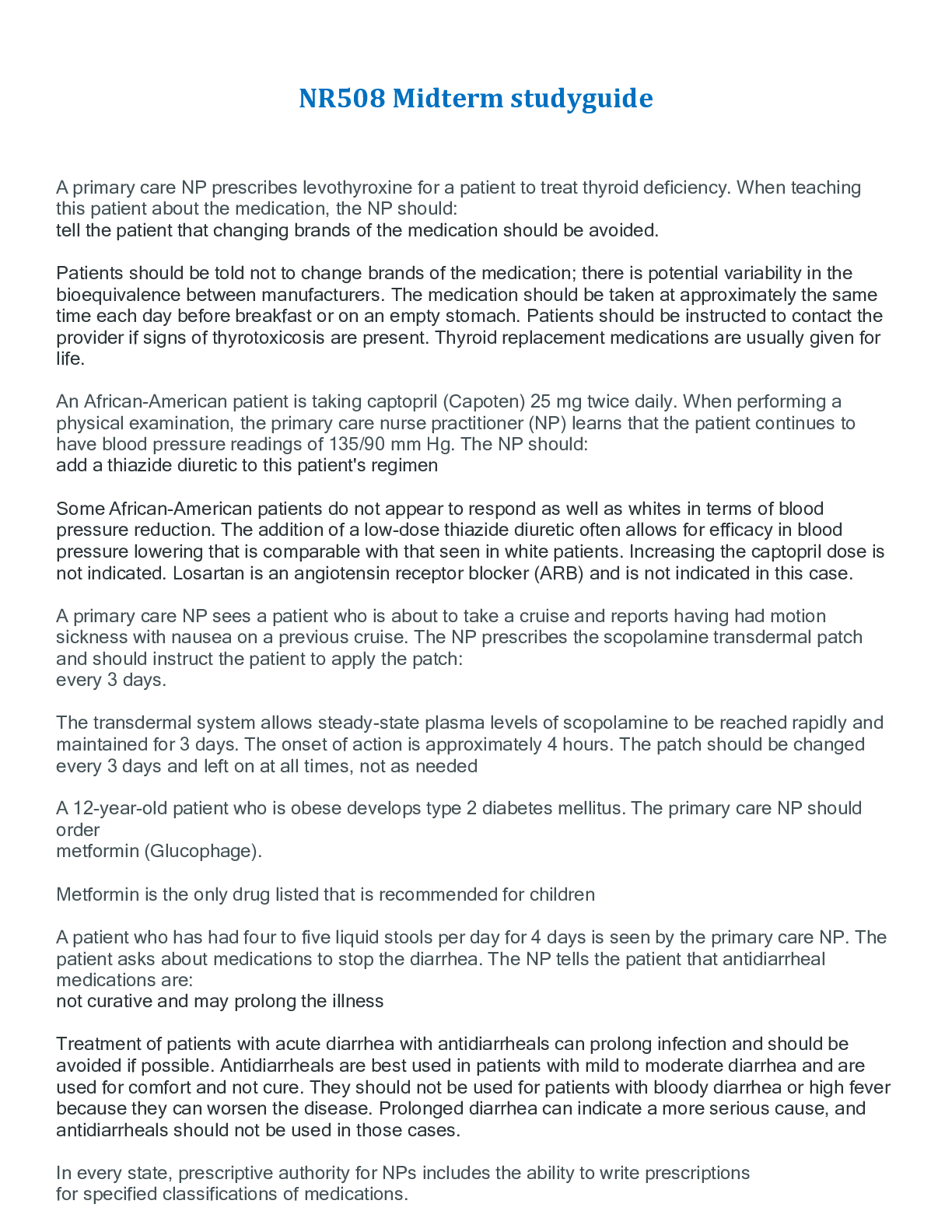
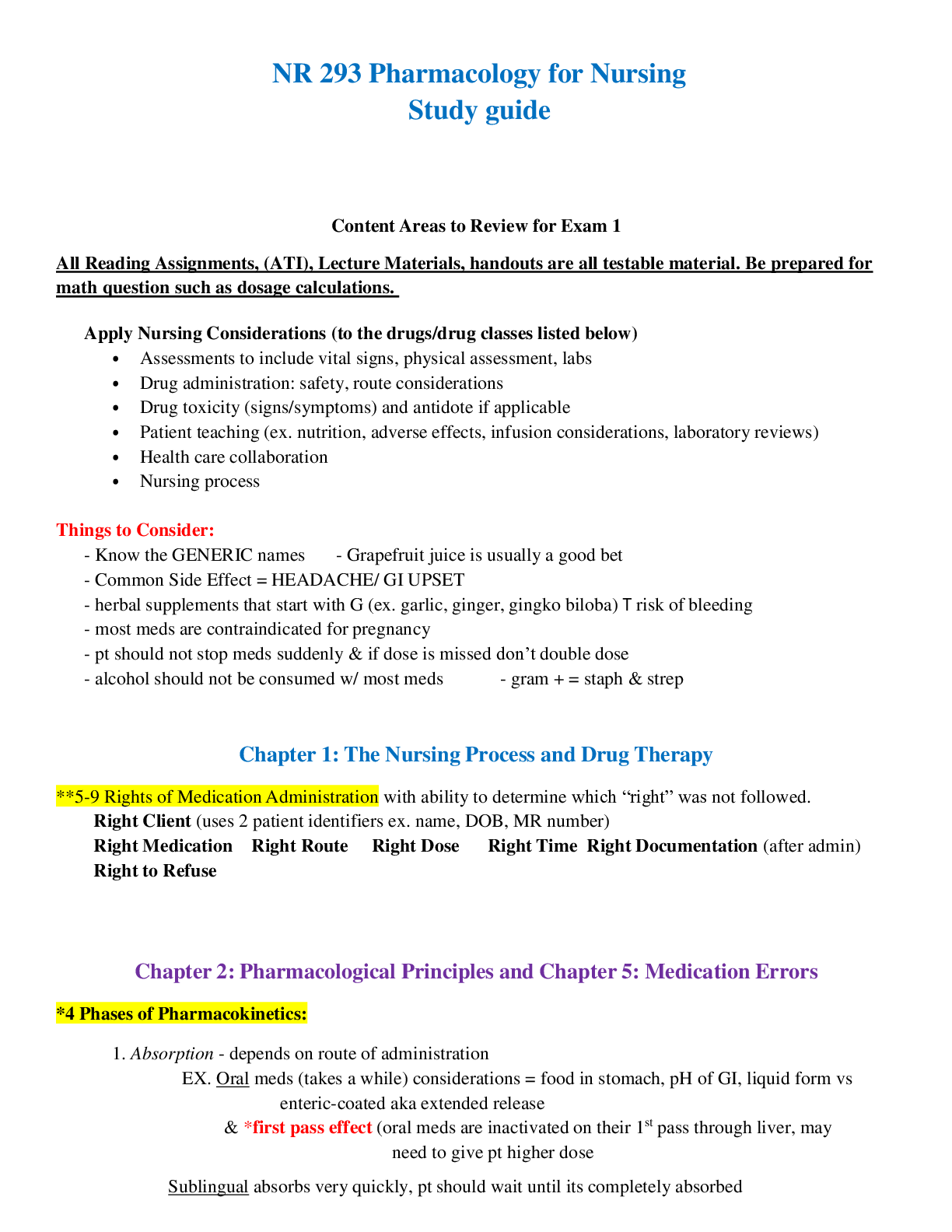
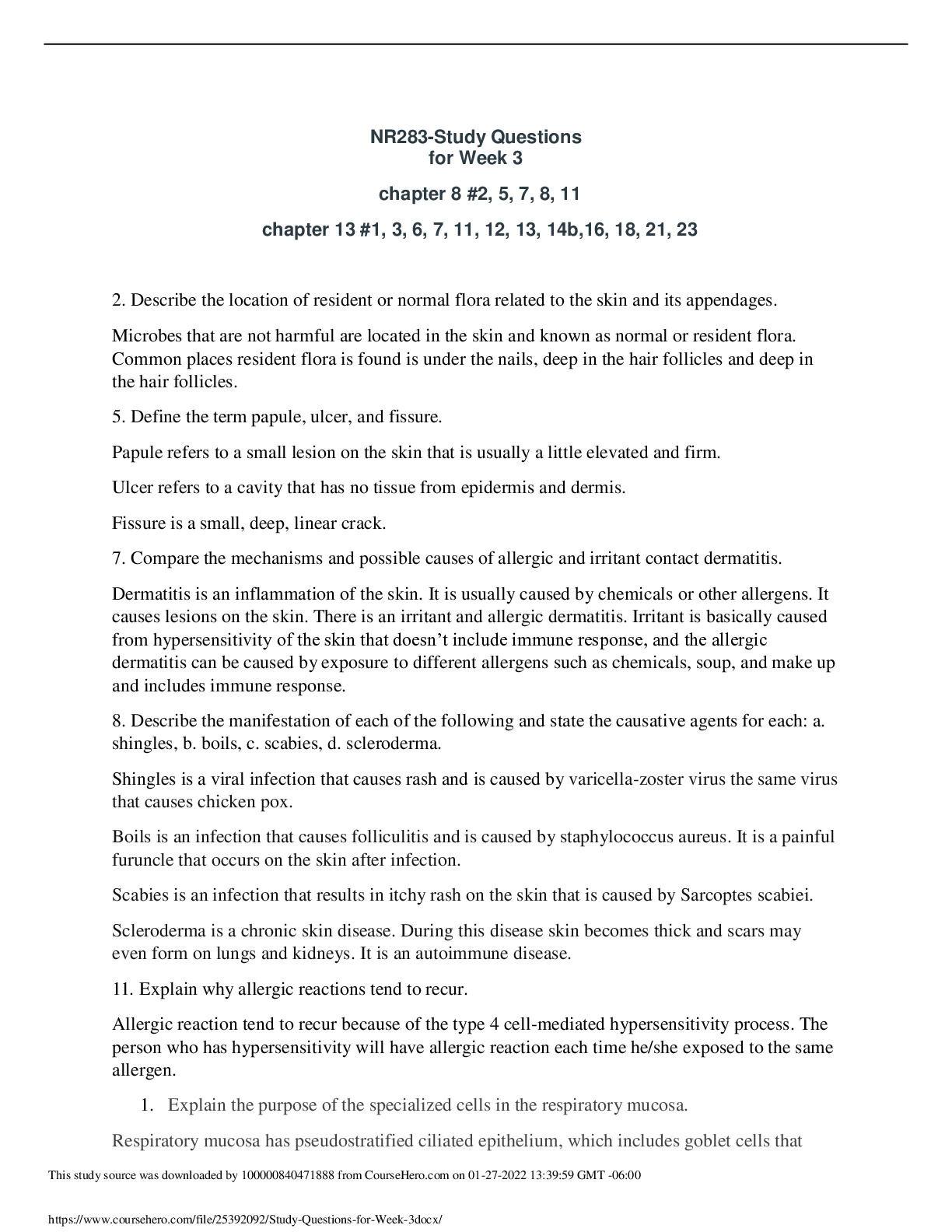
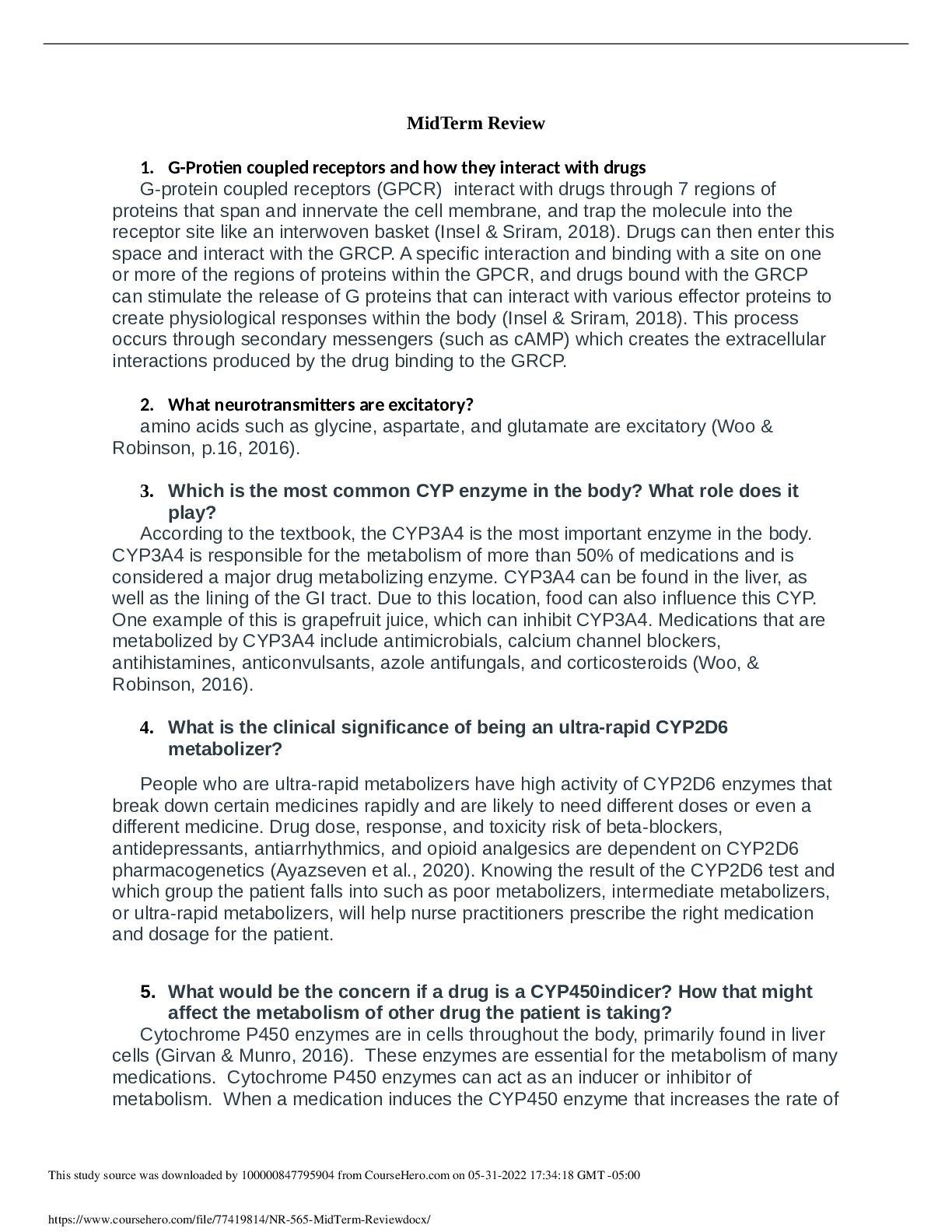
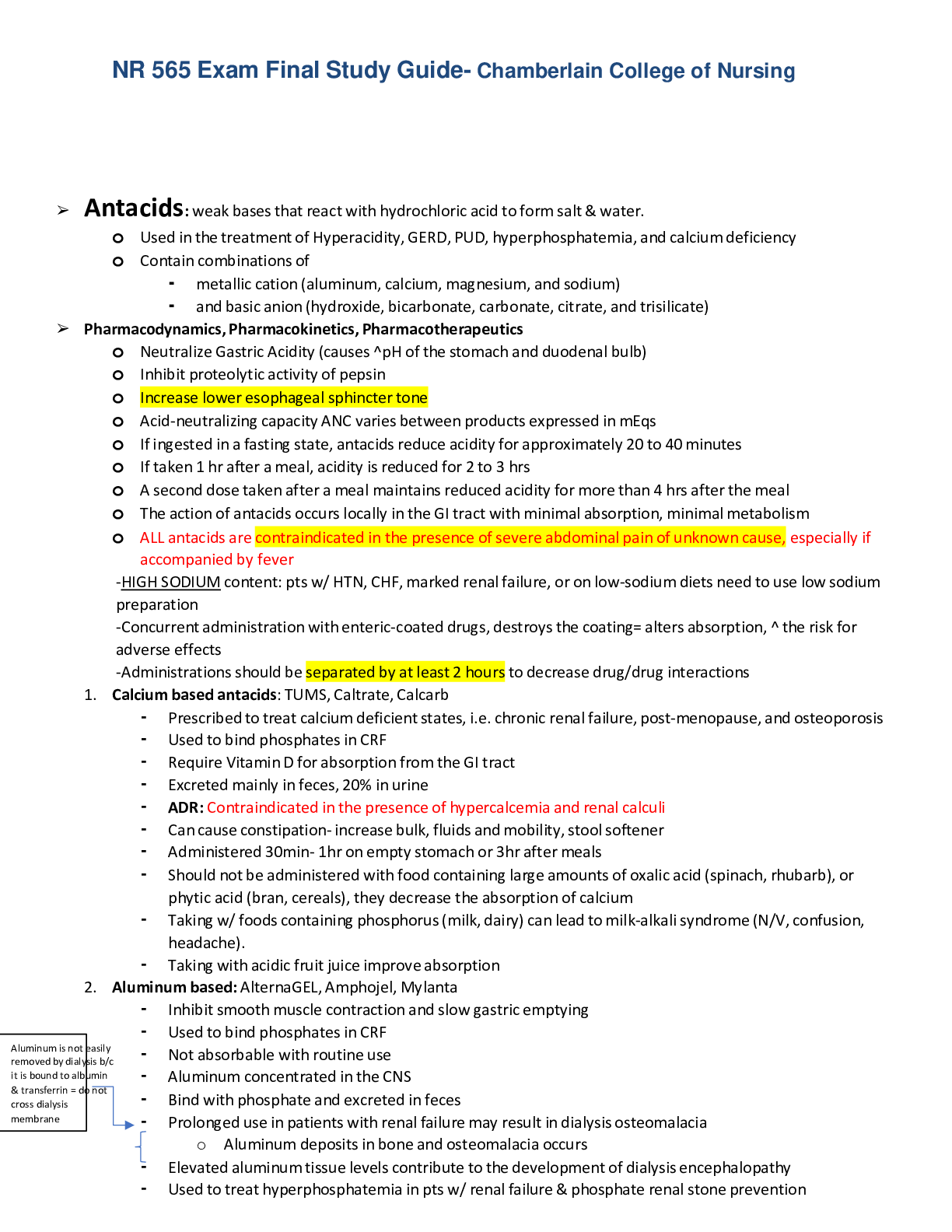
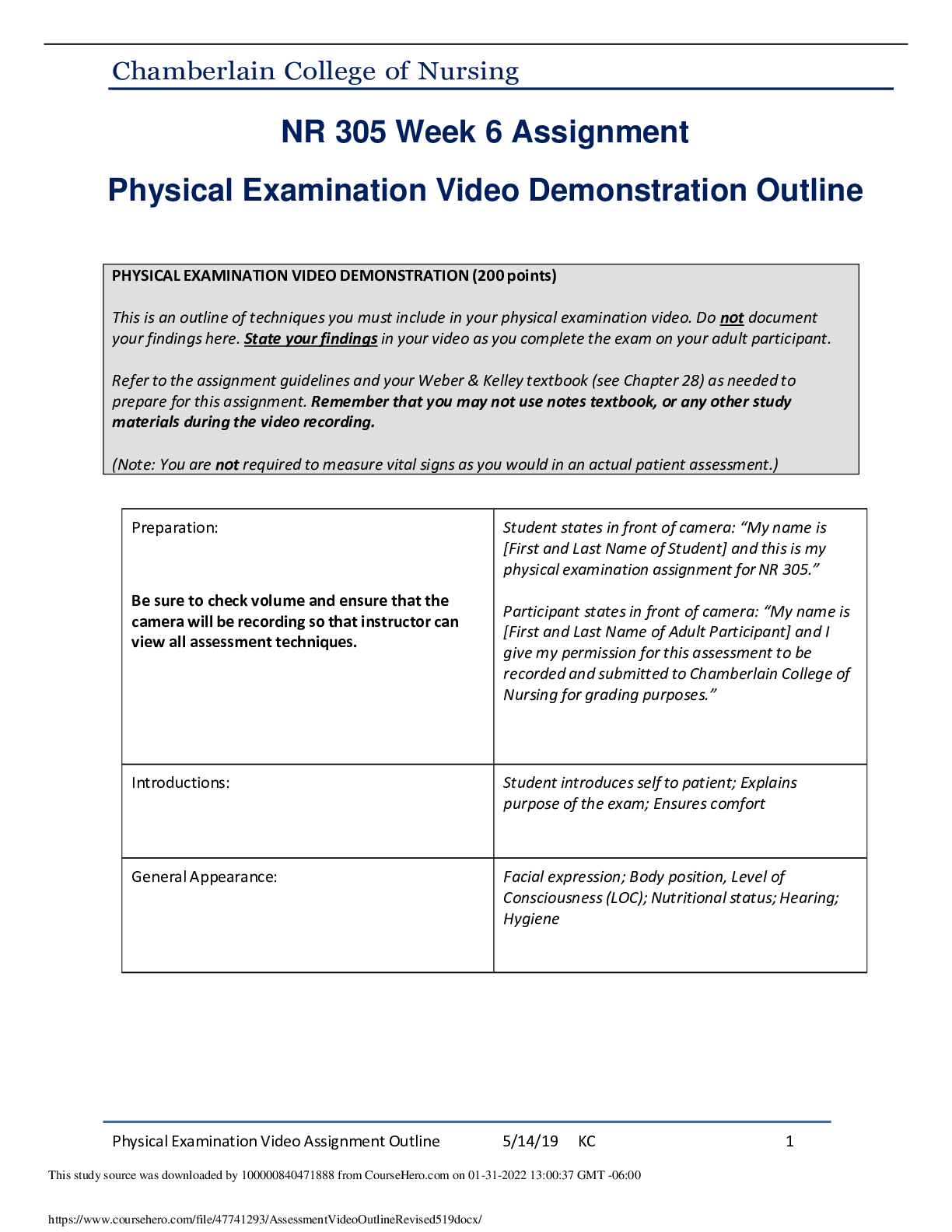
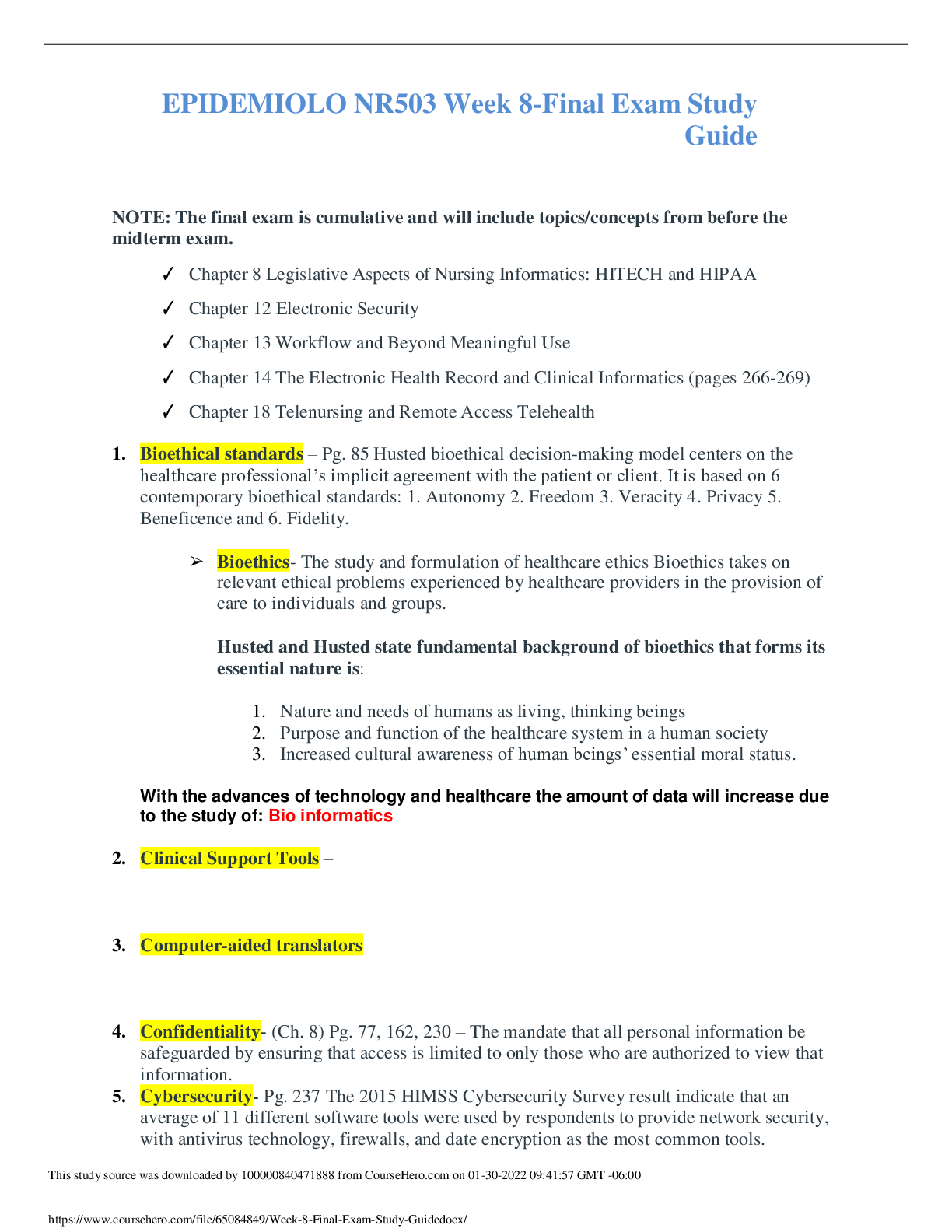

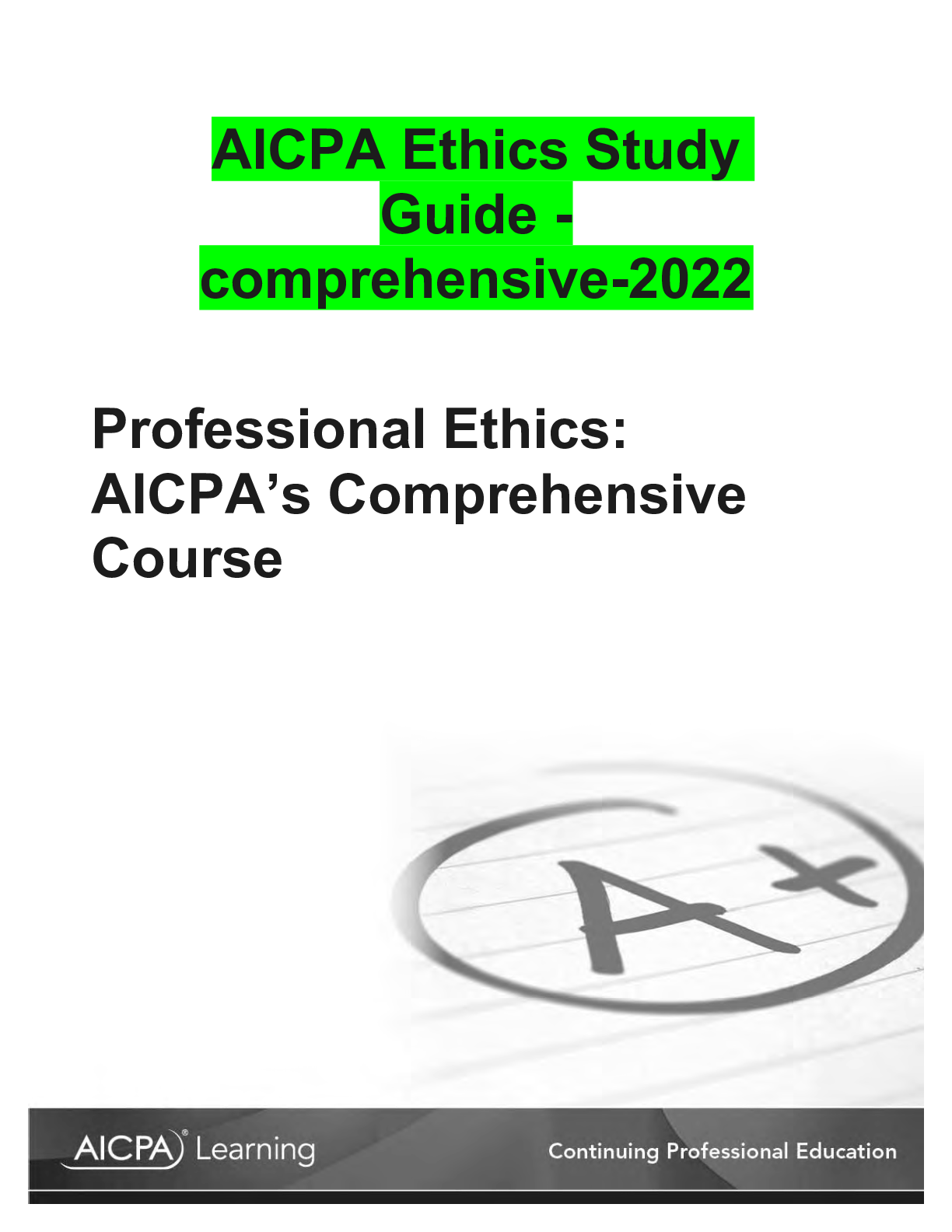

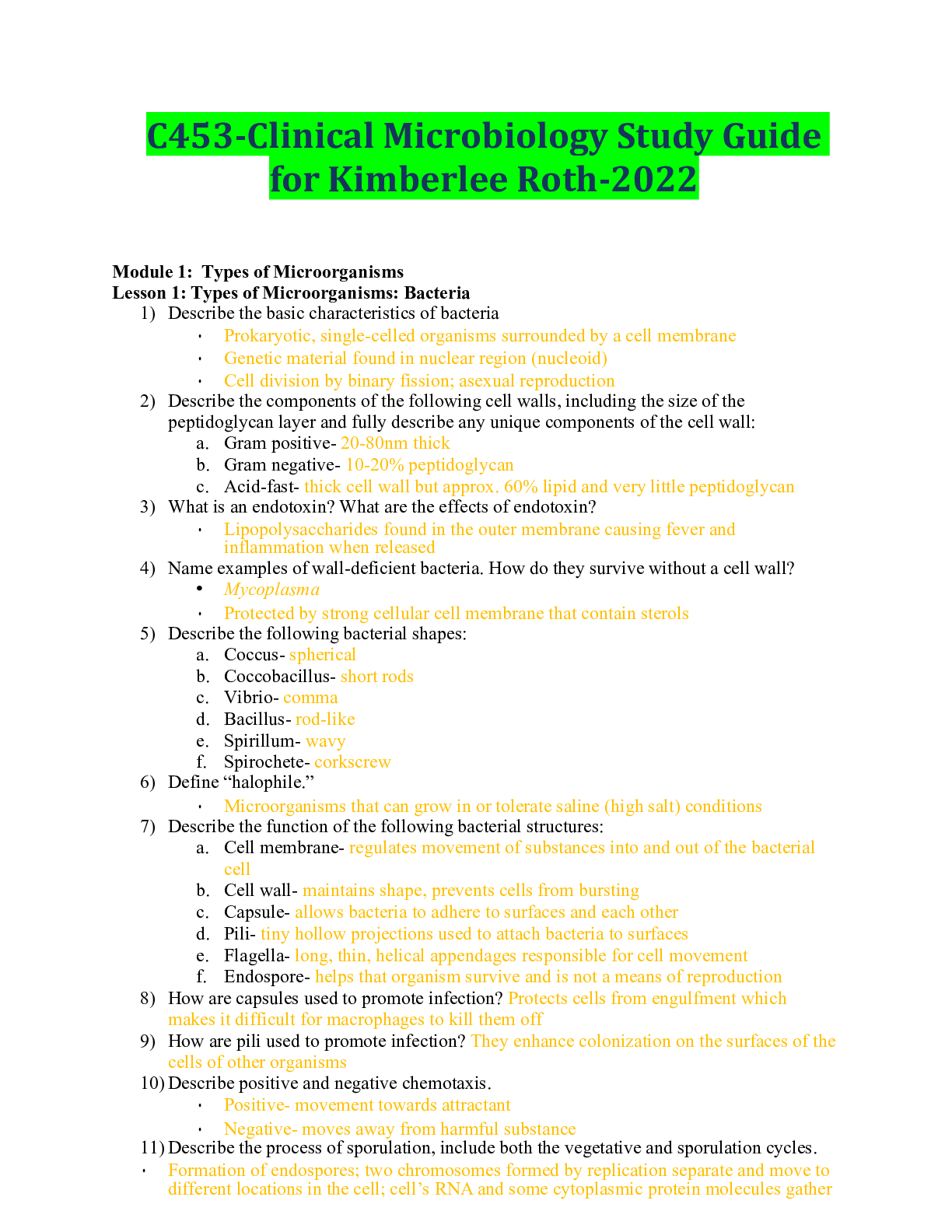
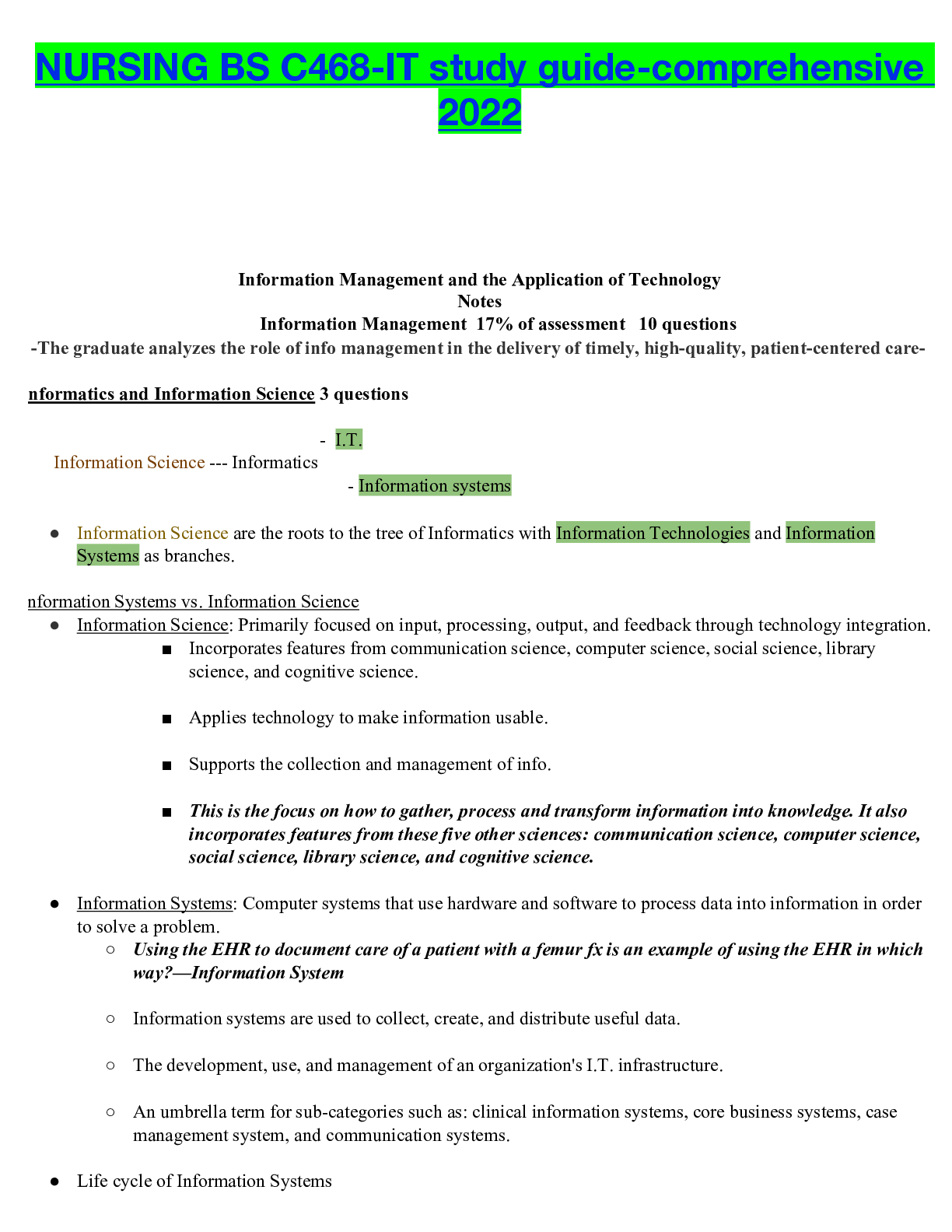




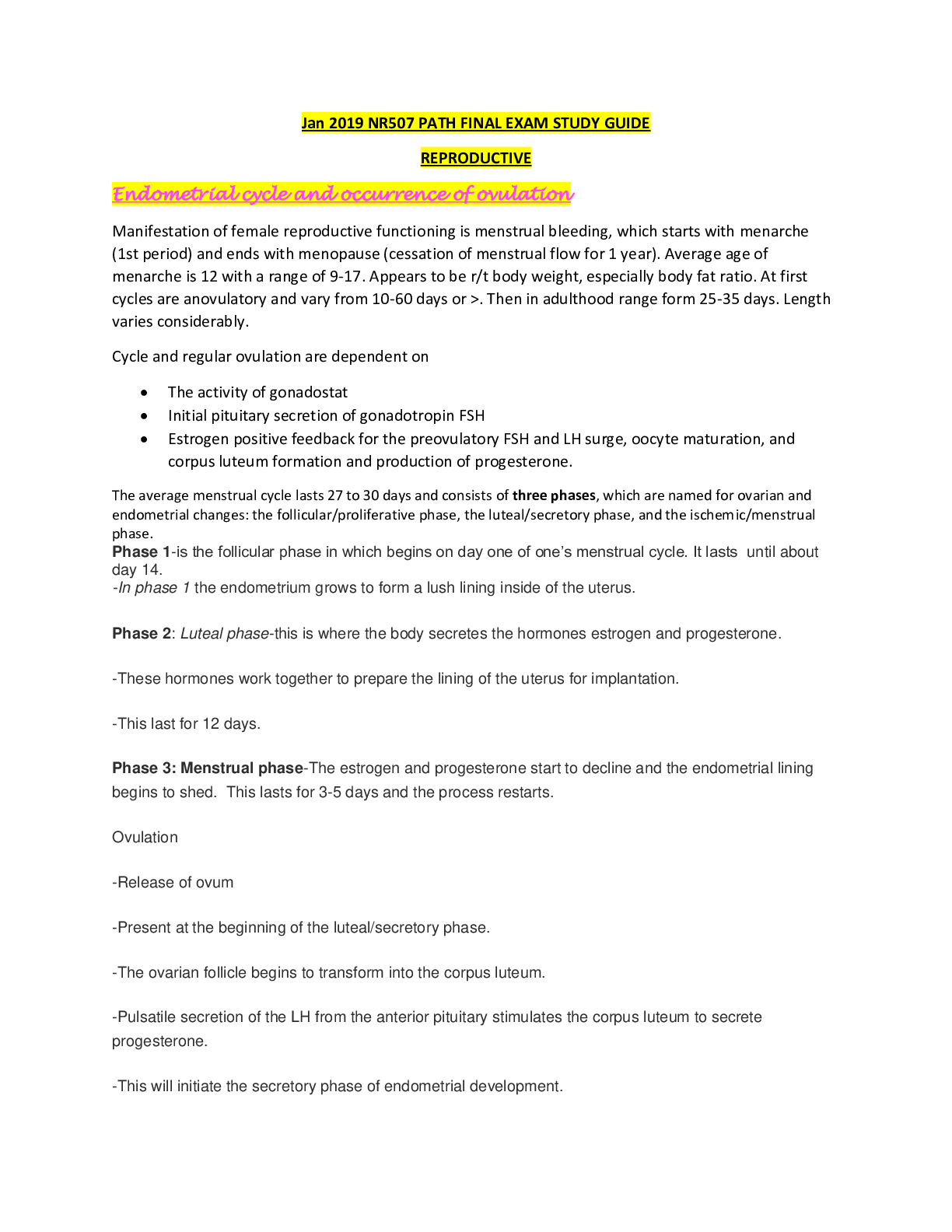
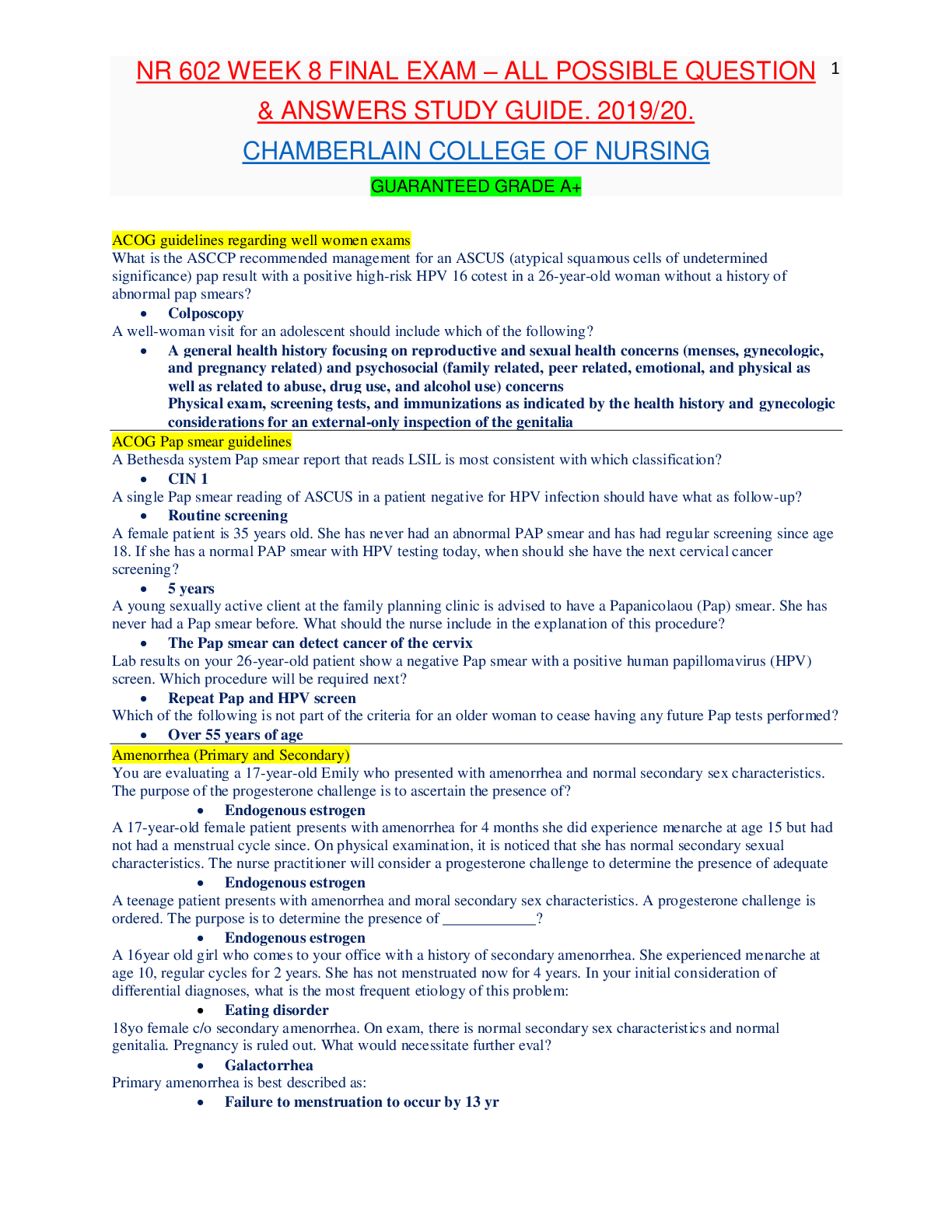

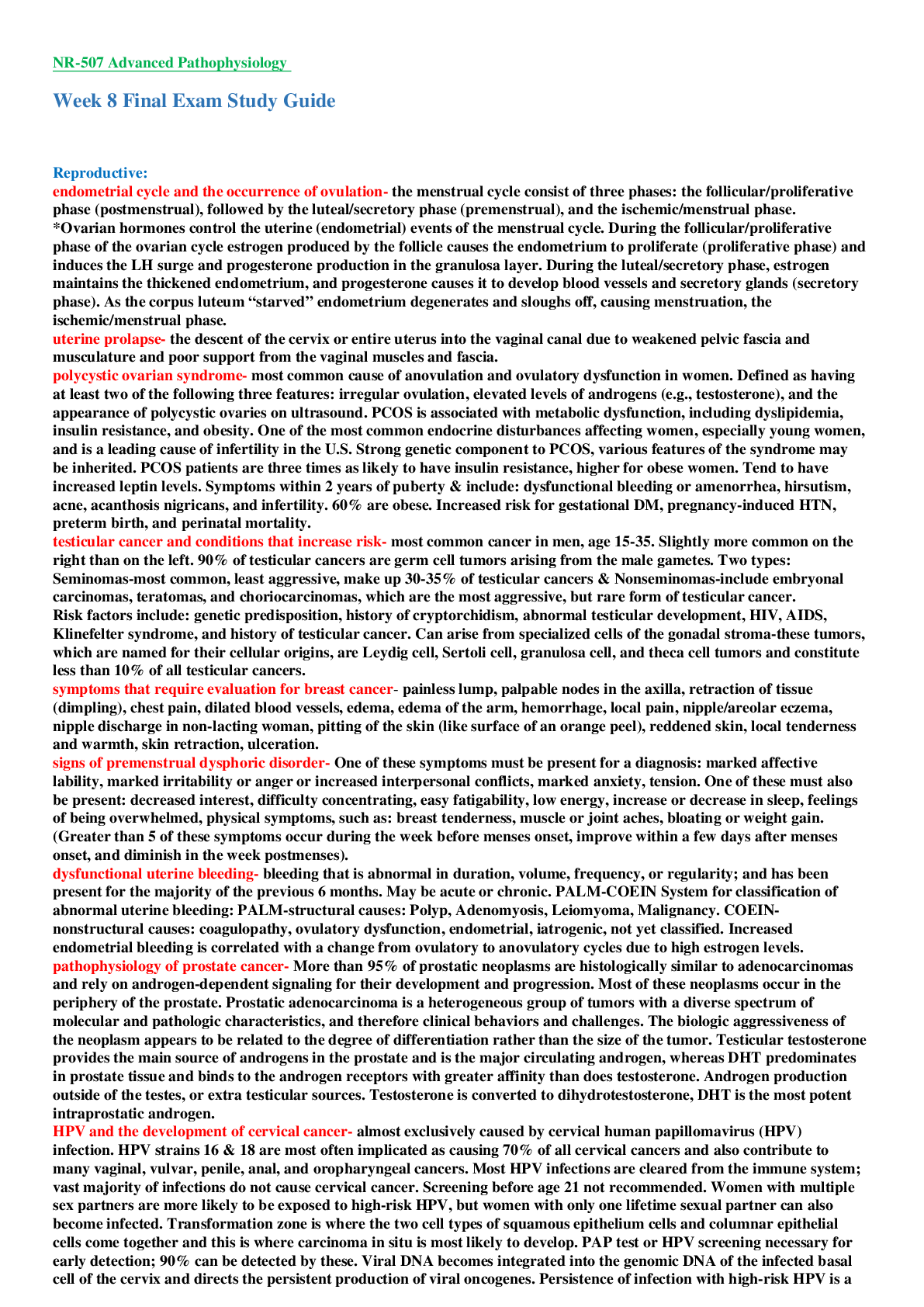
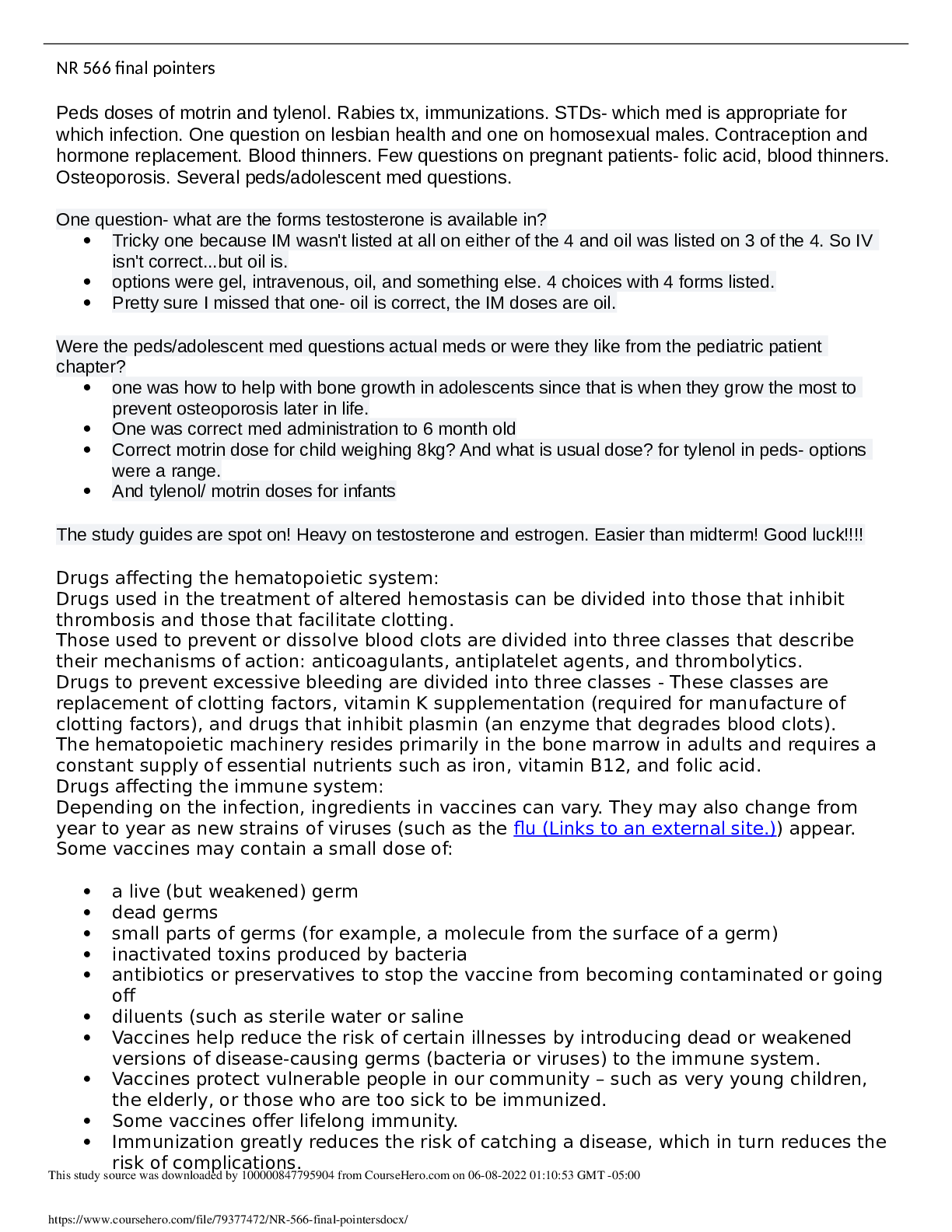

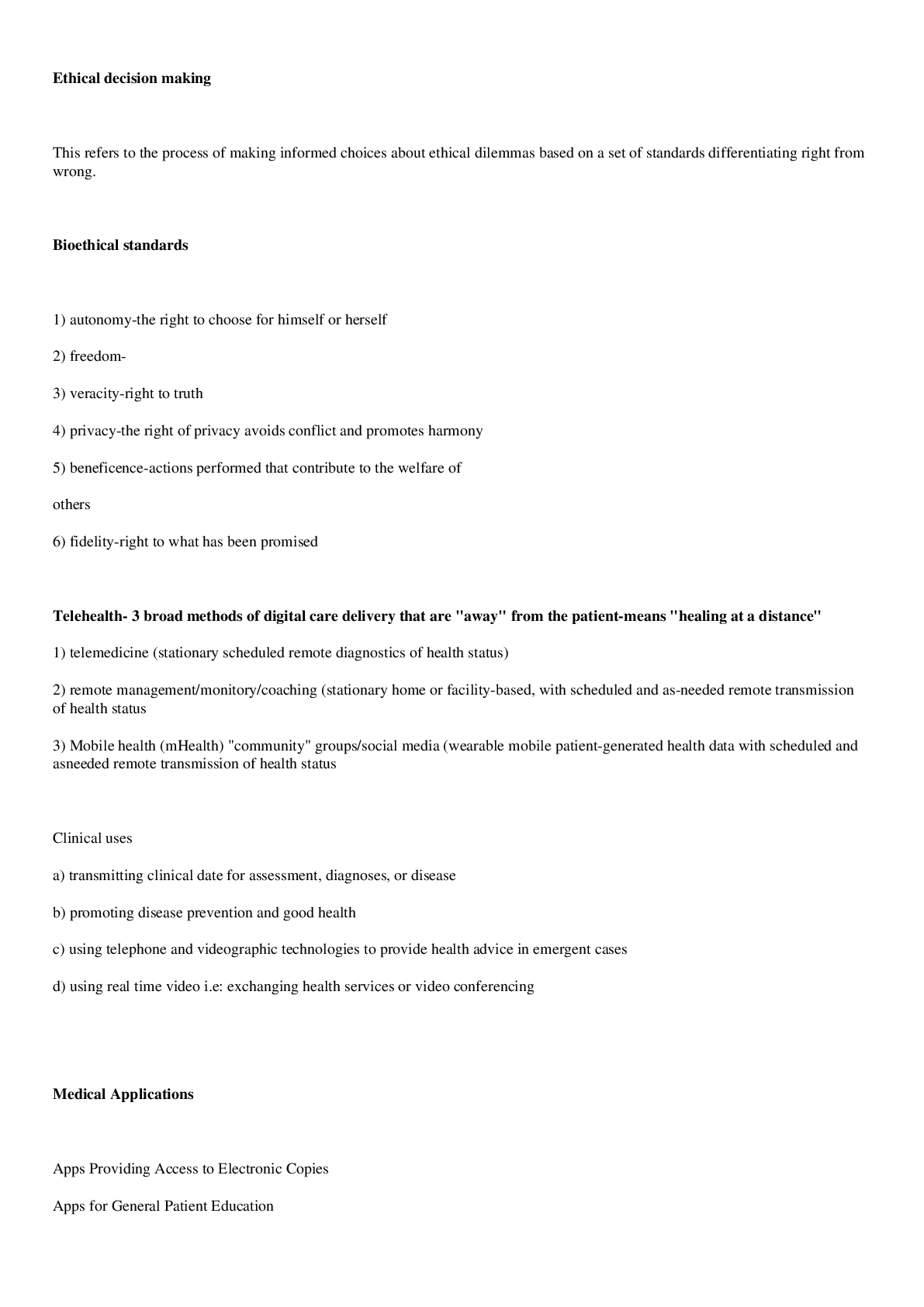

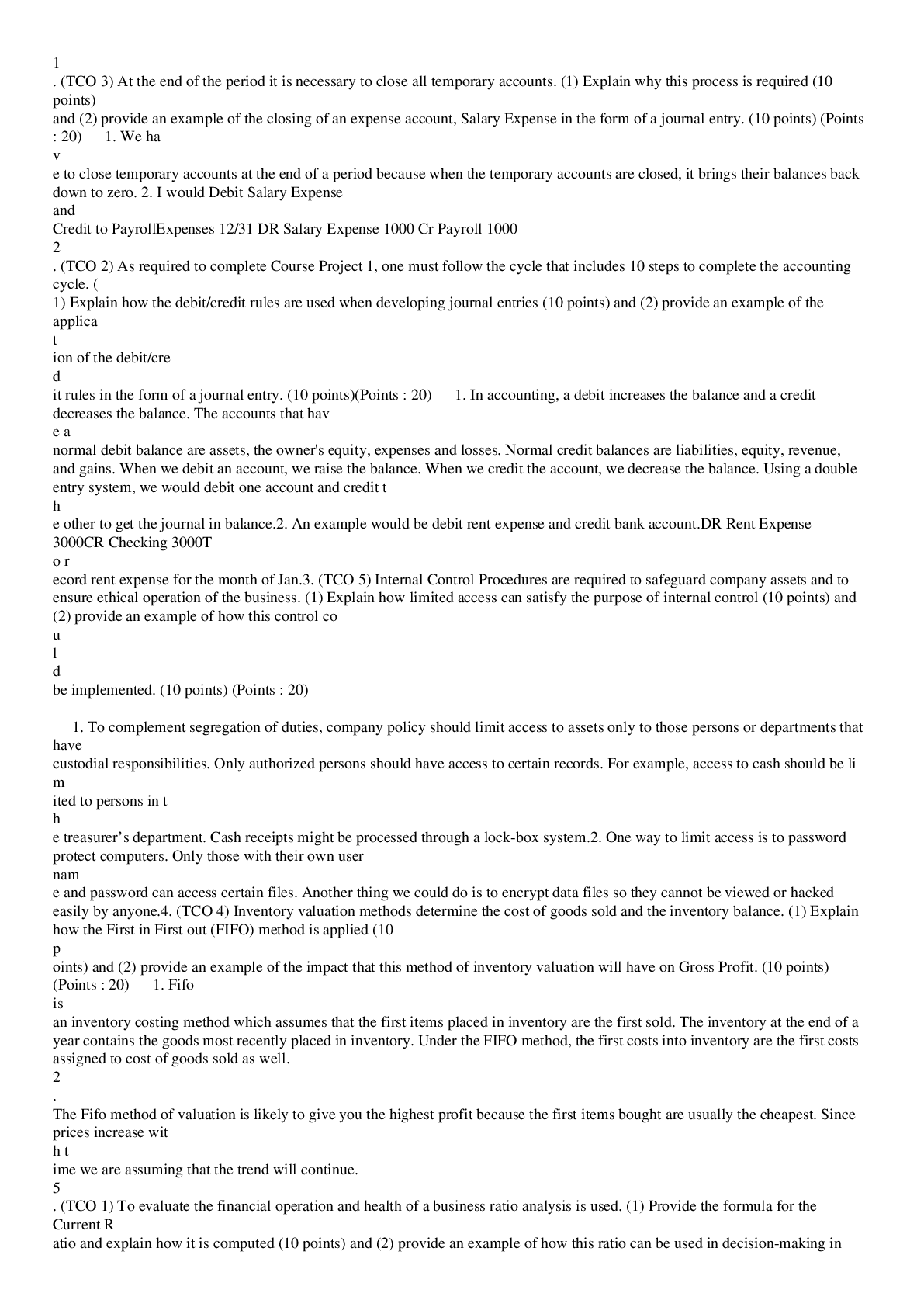
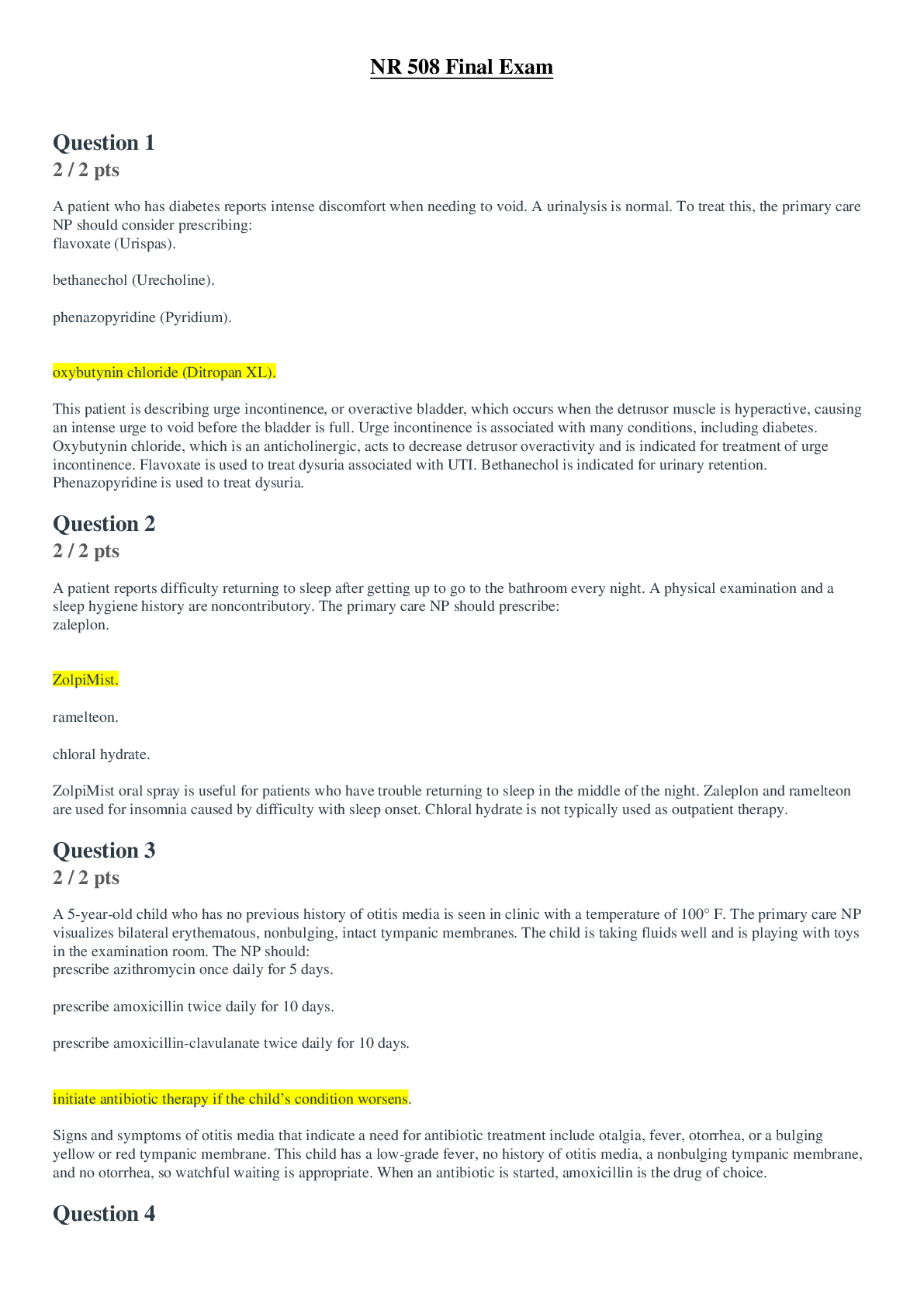
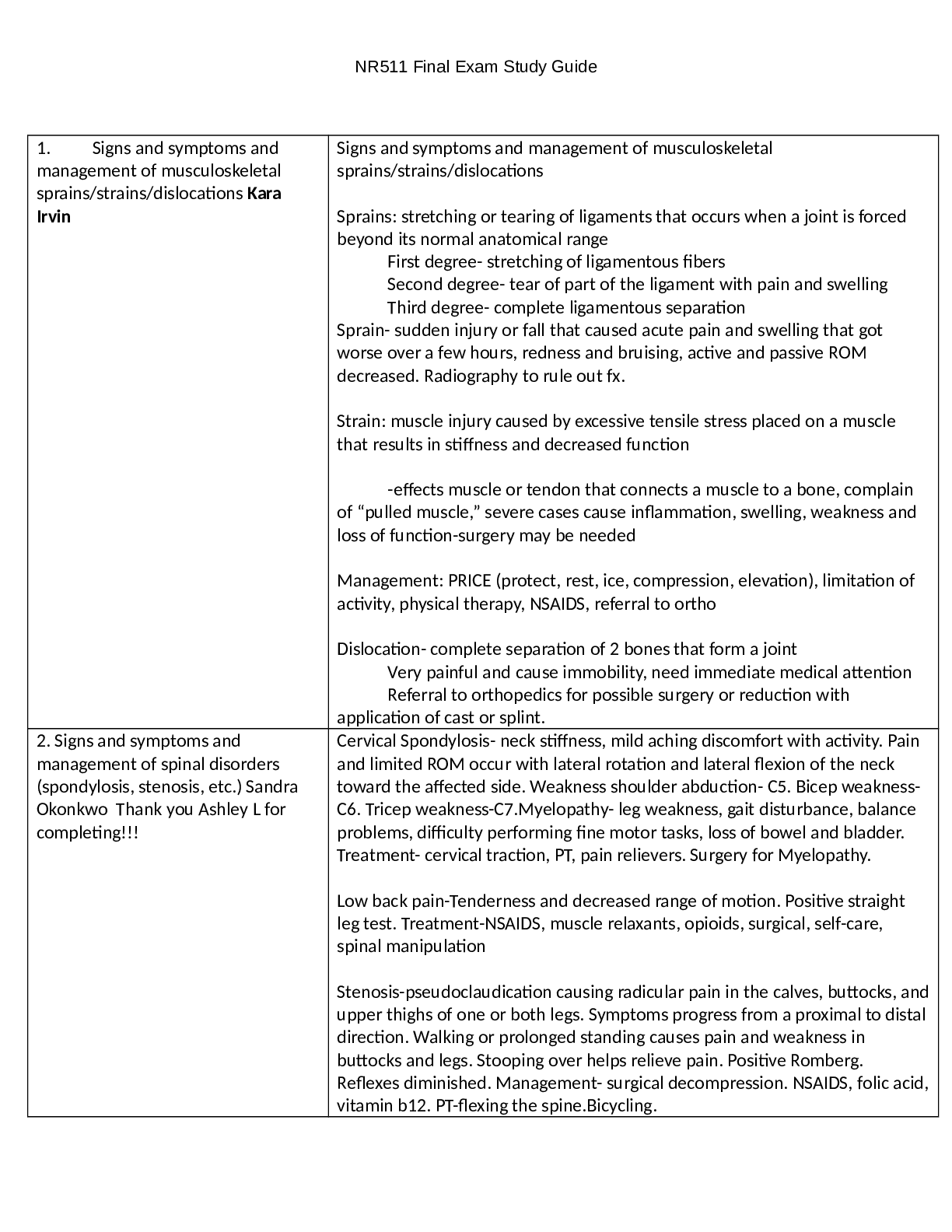
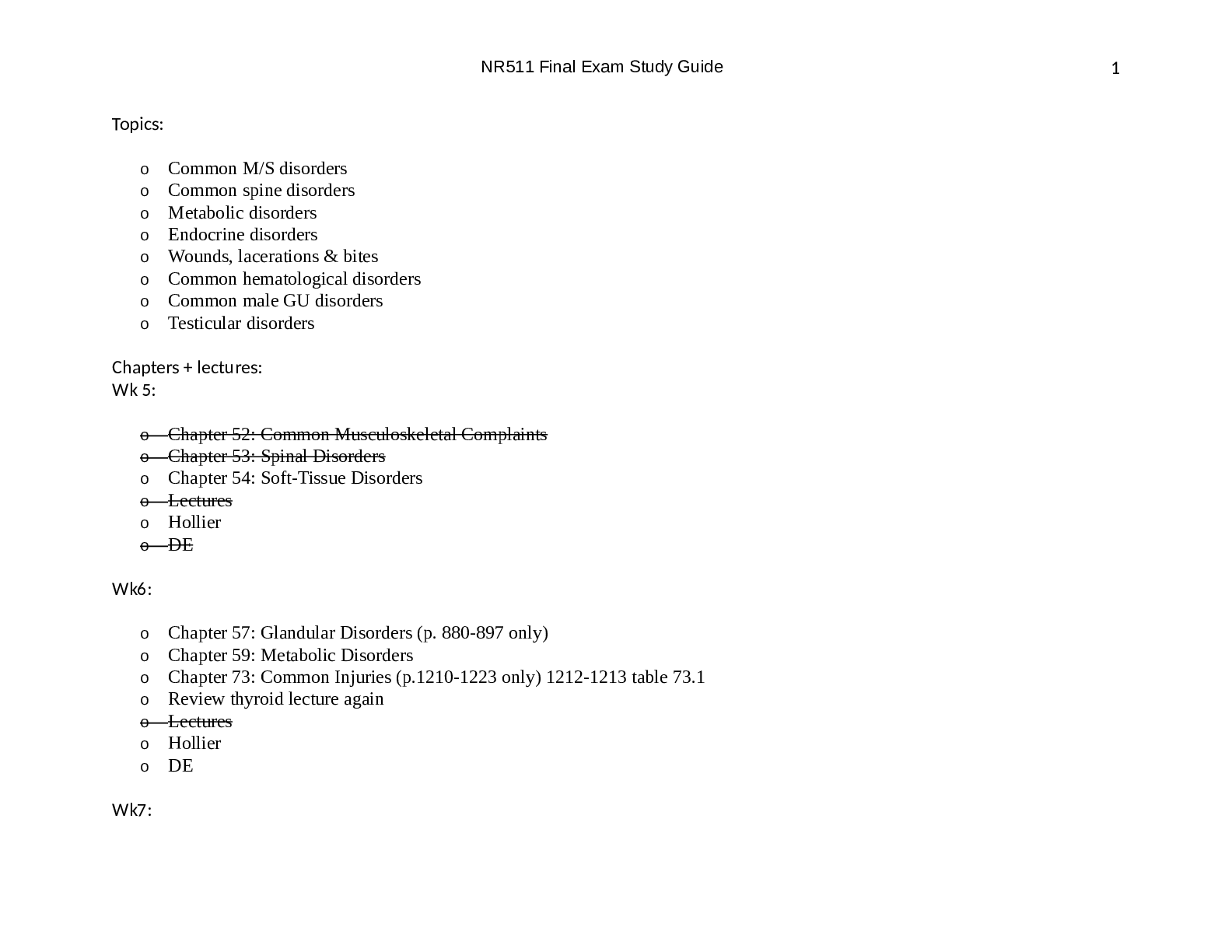
.png)
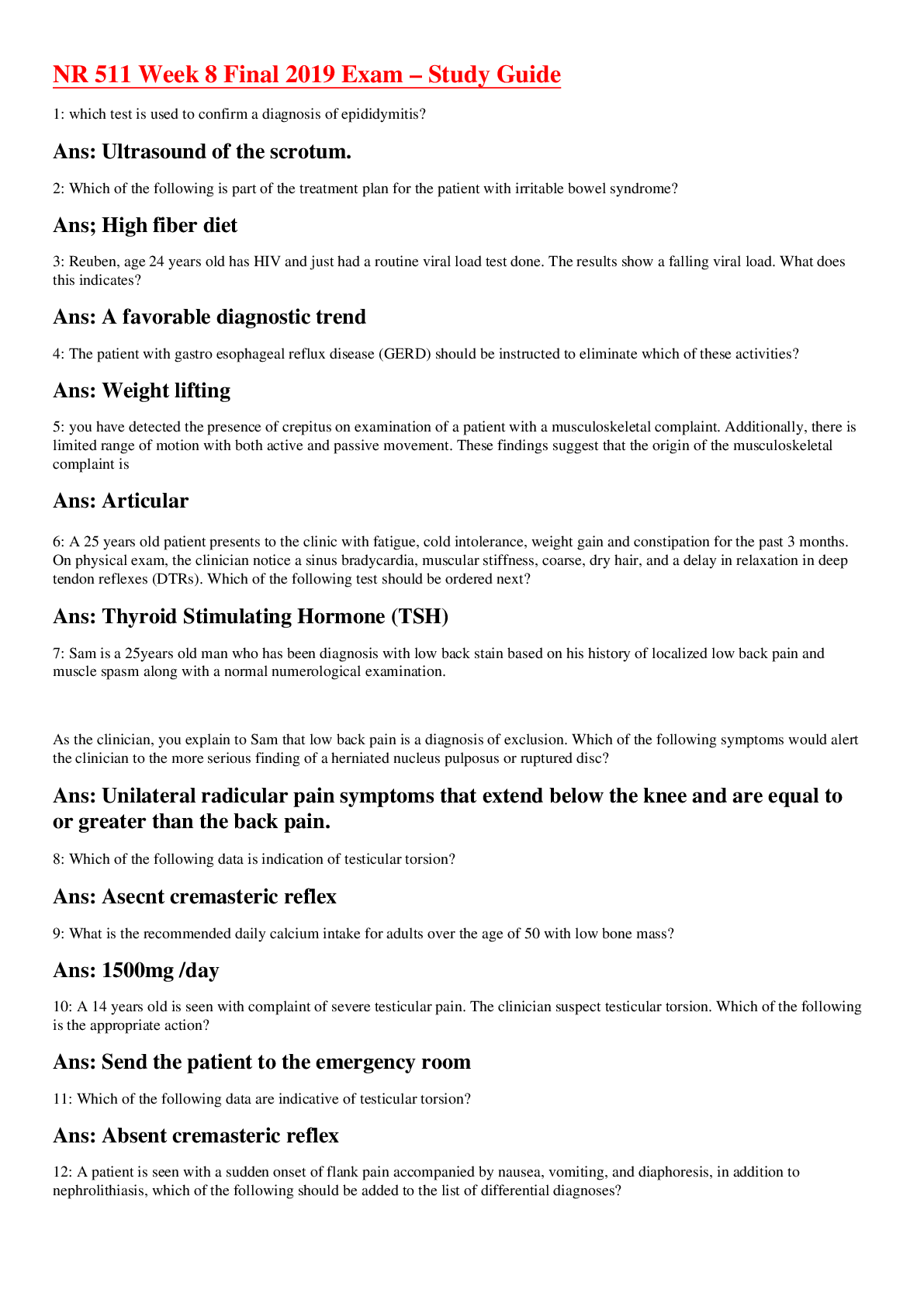
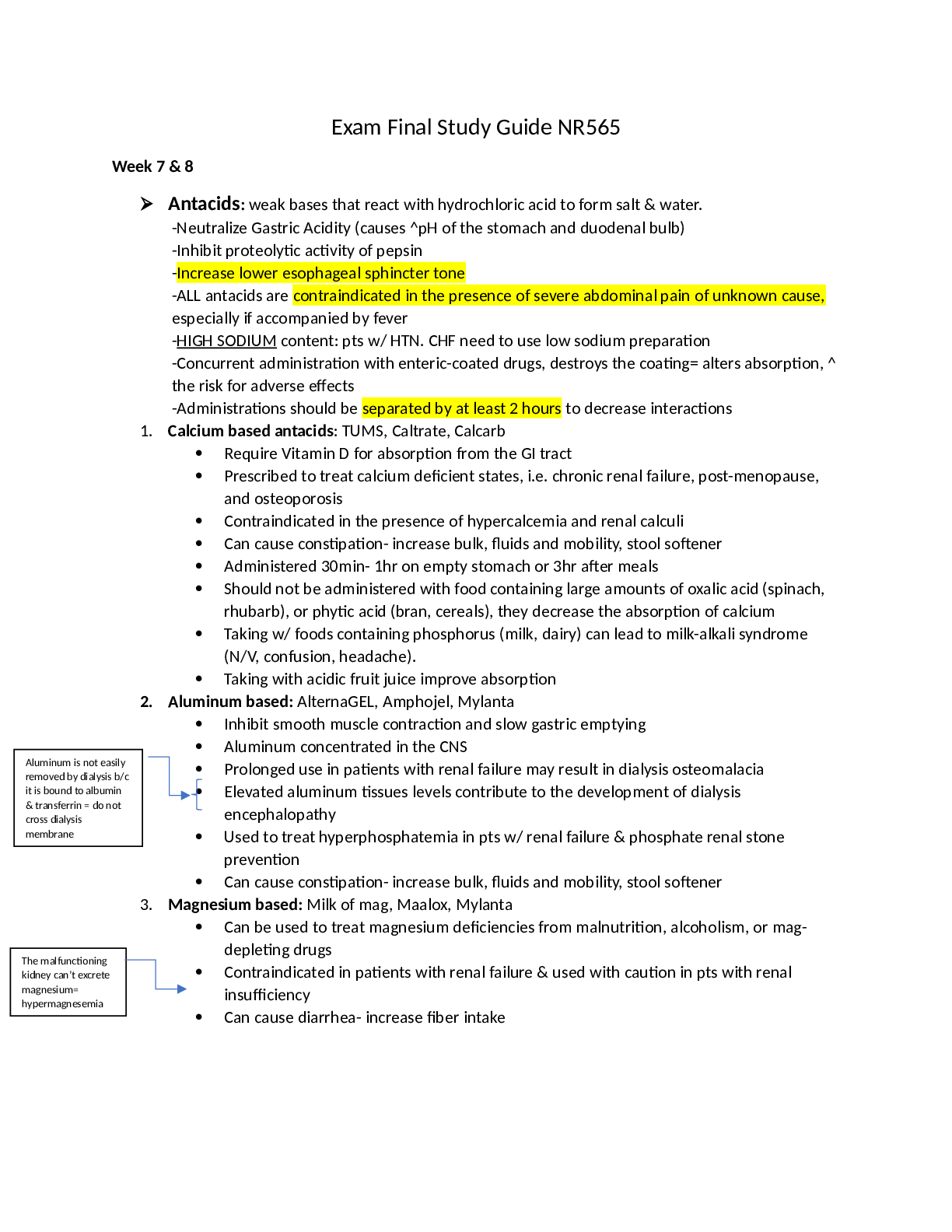
.png)
.png)

